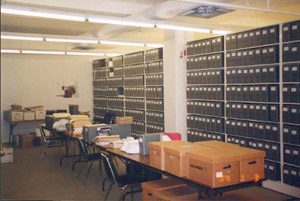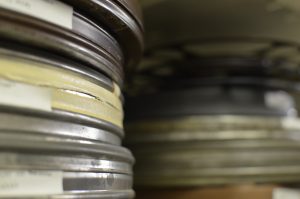The mission of the Archives and Records Office is to ensure that the documentary evidence of the life and work of the church is preserved and accessible for use by church officials and interested historians and researchers. The Archives’ holdings date primarily from the early 1800s to the present, and consist of approximately 3,500 cubic feet of textual records, 15,000 photographs, several thousand hours of audio-visual recordings, hundreds of architectural plans, and more than a million pages of documents on microfilm. The vast majority of this material is by its very nature, unique and irreplaceable, and therefore exceptionally valuable. These records were created by church workers in the normal course of business and therefore act as evidence of that business: documenting the decisions, actions, events, responsibilities, assets, property and activities of The Presbyterian Church in Canada.
Each year the Archives’ staff serve approximately 2,500 researchers. About 15% visit our office in person, while the remaining 85% contact us by email, phone, and regular mail. Many travel from all over Canada and the world to visit our Reading Room and consult the records in our care. Often these visitors are from areas where the church has historically been active in mission and development work, such as Taiwan and India.

